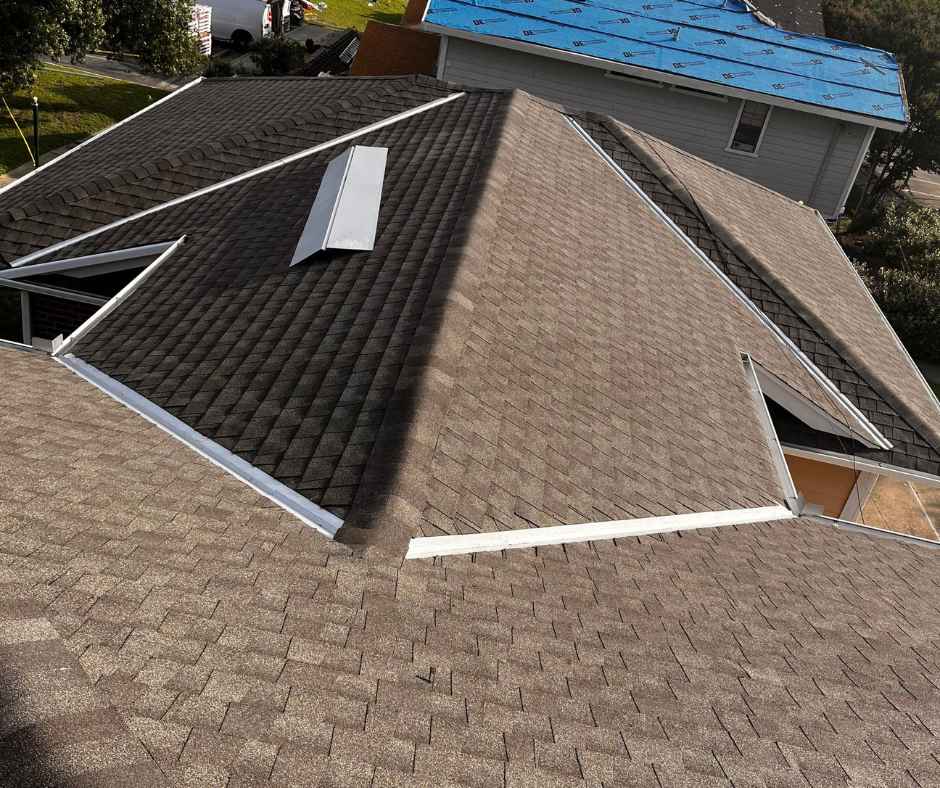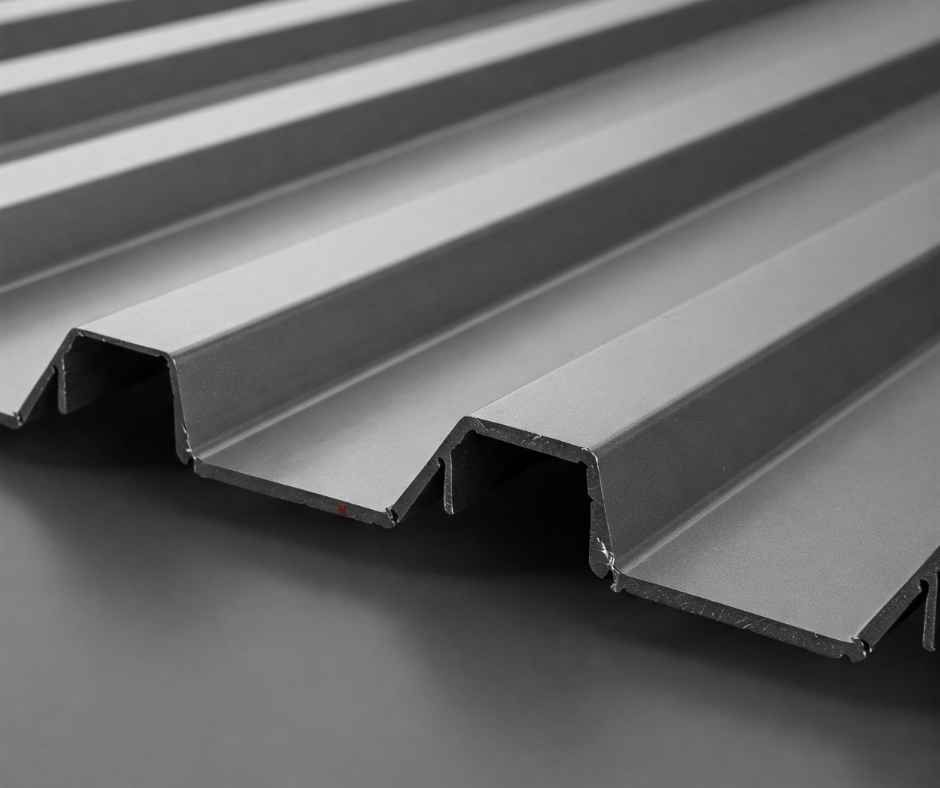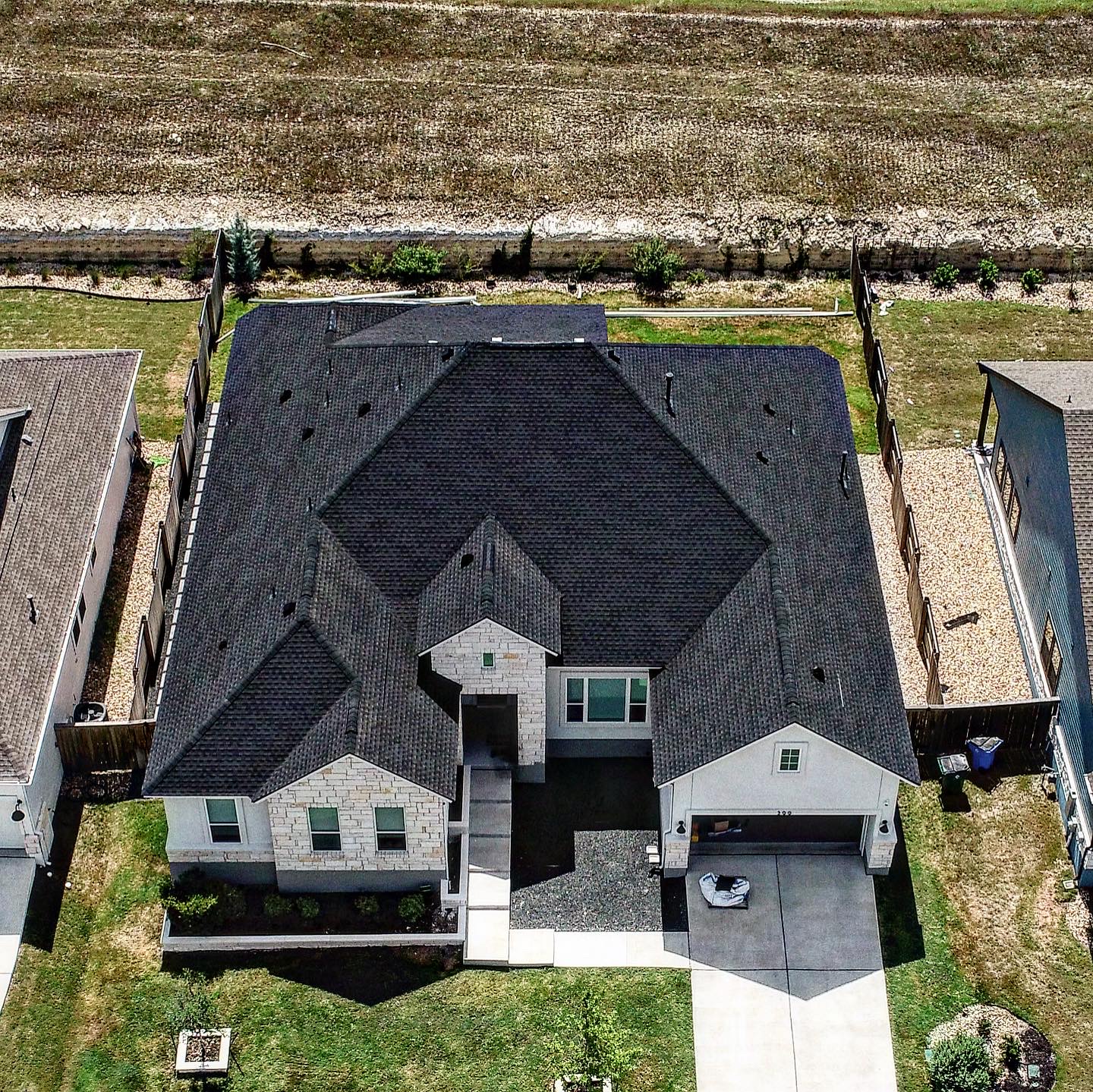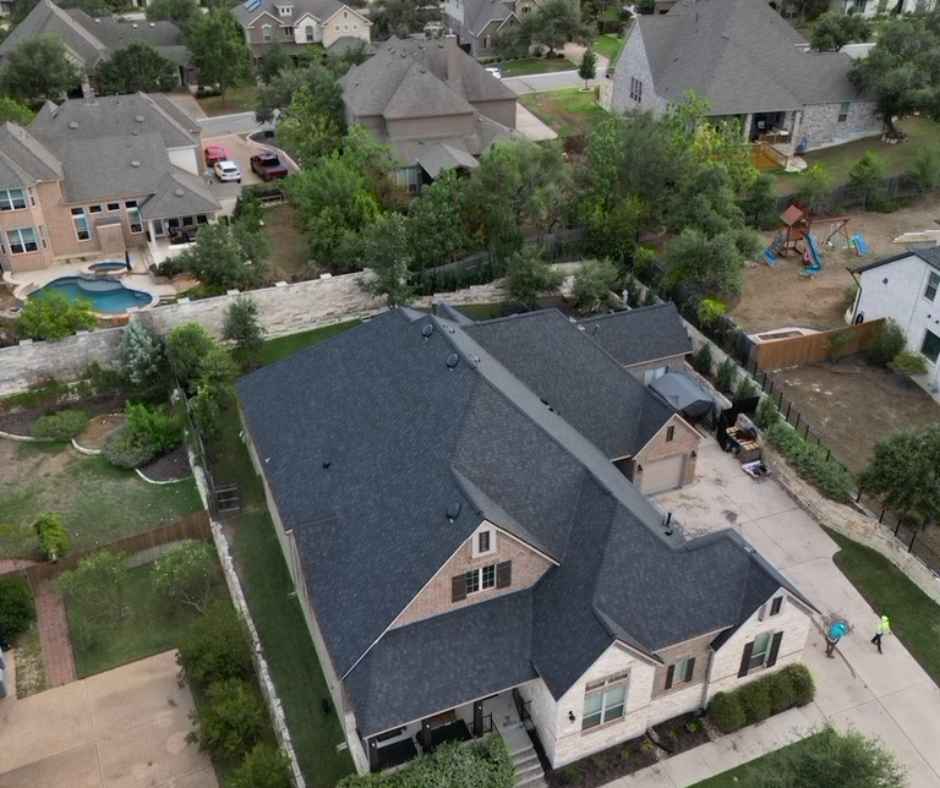Serving Hill Country
& Greater Austin
Storm Damage Roof Inspections: What Every Homeowner Should Know

When a major storm rolls through your neighborhood, your roof takes the first hit. High winds, heavy rains, and hail can cause damage that often goes unnoticed until it leads to costly repairs. Storm damage isn’t always obvious—what looks like a small issue from the ground could be hiding serious structural problems beneath your shingles. As a homeowner, knowing how storms affect your roof and understanding the importance of post-storm inspections can help protect your investment. Ignoring roof damage after a storm can lead to leaks, mold growth, and even structural weakening over time.
In this blog, we’ll explain the key signs of storm damage, why timely inspections matter, and when you should contact Elite Roofing & Restoration for a professional evaluation.
Why Storm Damage Inspections Matter for Protecting Your Home
Your roof serves as your home’s first line of defense against the elements, but storms can compromise that protection quickly. After heavy rain, strong winds, or hail, your roofing system may suffer hidden damage that isn’t immediately visible. While missing shingles are easy to spot, subtler issues—like small punctures, compromised flashing, or shingle granule loss—often go unnoticed without a professional inspection.
Skipping a post-storm inspection can have serious consequences for your home:
- Water Leaks: Small cracks or lifted shingles let water seep into your attic and walls.
- Structural Damage: Over time, moisture weakens roof decking and support structures.
- Higher Repair Costs: Damage worsens without prompt repairs, leading to costly replacements.
- Insurance Claim Delays: Without documented inspections, you may struggle to file timely claims after a storm.
A comprehensive storm damage roof inspection ensures problems are caught early—saving you from expensive repairs down the road. Scheduling a professional inspection after major weather events helps protect both your home’s value and your family’s safety.
Key Signs of Storm Damage to Your Roof
After a storm passes, it’s crucial to check your roof for potential damage. While some issues are easy to spot from the ground, others can be hidden beneath the surface. Knowing what to look for can help you take action before minor problems turn into major repairs.
Common Signs of Storm Damage
Look for these visible symptoms after heavy storms:
- Missing or Loose Shingles: Wind can lift and tear away shingles, leaving bare spots vulnerable to leaks.
- Dented or Cracked Shingles: Hail or debris impacts may crack shingles or leave dents.
- Shingle Granules in Gutters: If you notice black or gray granules collecting in your gutters, your shingles could be wearing down after hail or wind damage.
- Water Stains on Ceilings or Walls: Interior water marks are a clear sign that water is making its way inside.
- Sagging Roof Sections: Any warping or sagging areas could indicate water infiltration or structural weakness.
- Visible Leaks: Water dripping during or after storms is a sign of urgent roof damage.
What Causes Storm Damage to Your Roof?
Storms can damage your roof in multiple ways. Understanding the causes helps explain why immediate inspections are essential:
- High Winds: Gusts can lift or peel away shingles, exposing your roof’s underlayers.
- Hailstorms: Hail impacts crack, dent, and puncture roofing materials.
- Heavy Rain: Persistent rain can exploit even minor roof weaknesses, leading to leaks.
- Debris Impact: Tree branches or flying debris may strike and damage your roof.
- Ice Dams: In colder months, melting snow refreezes along the roof edge, forcing water under shingles.
Recognizing both the signs and causes of roof damage after storms helps you act quickly to protect your home.
Storm Damage Roof Repair Solutions: What Homeowners Should Do Next
After identifying signs of storm damage, knowing your next steps can help prevent costly issues from worsening. Some actions can be handled on your own, while more serious damage requires professional help to ensure your home stays protected.
DIY Roof Inspection and Minor Solutions
For minor or visible issues, homeowners can take these practical steps:
- Inspect Safely From the Ground: Use binoculars to scan for missing shingles, debris, or visible damage without climbing on your roof.
- Clear Small Debris: If safe to do so, remove branches or leaves from your gutters and downspouts to restore proper drainage.
- Check Inside Your Home: Look in your attic and ceilings for water stains, damp insulation, or any signs of leaks.
- Document Damage: Take clear photos of any visible roof damage for insurance purposes before attempting repairs.
Important Note: Avoid climbing onto your roof yourself—this is dangerous, especially after a storm when surfaces may be slick or unstable.
When to Call a Professional Roofing Contractor
While small debris removal is safe for most homeowners, professional inspections and repairs are necessary for more serious concerns. Contact a roofing expert like Elite Roofing & Restoration if:
- You spot missing or cracked shingles.
- Granules are present in your gutters.
- You find water stains or leaks inside your home.
- You’re unsure whether your roof has hidden damage.
- You’re planning to file a storm-related insurance claim.
A professional roofer can safely assess areas of your roof that aren’t visible from the ground, detect hidden structural problems, and provide expert repairs that restore your roof’s strength and integrity.
Tips to Prevent Storm Damage to Your Roof
While no roof is completely storm-proof, proactive maintenance can significantly reduce your risk of serious damage. By preparing in advance and maintaining your roofing system, you can help minimize the impact of future storms.
Preventive Roof Maintenance Tips
- Schedule Annual Roof Inspections: Have a professional inspect your roof at least once a year to catch minor issues before they worsen.
- Trim Nearby Trees: Keep branches cut back from your roof to prevent falling debris during storms.
- Clean Gutters Regularly: Ensure gutters and downspouts stay clear so water can flow away from your roof and home.
- Upgrade Roofing Materials: If replacing your roof, choose impact-resistant shingles or materials designed to withstand severe weather.
- Reinforce Flashing and Sealant Areas: Pay special attention to areas around vents, chimneys, and skylights where leaks often develop.
- Secure Loose Fixtures: Ensure vents, satellite dishes, and other roof-mounted fixtures are properly attached to prevent damage during high winds.
Consistent maintenance and simple upgrades can help your roof endure harsh storms and protect your home from costly water damage and structural issues.
Protect Your Home With a Storm Damage Roof Inspection
Storm damage isn’t always obvious, but ignoring it can lead to serious problems for your home. From water leaks and structural weakening to mold growth and expensive repairs, the risks of unaddressed roof damage are too high to overlook. Regular inspections after major storms give you peace of mind and help preserve the integrity of your home.
If you suspect your roof was damaged after a recent storm—or simply want the confidence of a professional evaluation—contact Elite Roofing & Restoration today. Our experienced team specializes in thorough storm damage roof inspections and reliable storm damage roof repairs to keep your home protected. Schedule your inspection now and protect your roof before minor issues become major problems.


